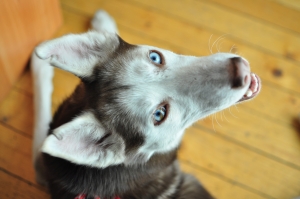 Dog Training Case Study- Aggressive Behavior
Dog Training Case Study- Aggressive Behavior
The other day I sat down with Glenn Sherrill of TrainPlayLive to talk with some of his dog training clients about some fairly extreme cases of aggressive behavior. You can see the first dog training discussion we had at my previous post.In this second conversation from the same day we sit down with the owner of a rescue dog. The dog is either a Pit Bull mix or an American Staffordshire terrier mix. Unfortunately, the dog is displaying some very odd cases of dog aggression including biting people seemingly without warning. Listen to the entire call here:
Dog Training Case Study- The Call
Press Play to listen below:
Dog Training Case Study- Conclusion
To be honest, this was a difficult dog training call for me. All behavior follows patterns and rules and precedents. Even when dogs are displaying horribly anti-social behavior and aggressiveness those behaviors STILL follow rules. There are rules that govern fear and aggression, etc. Granted, these are dogs who are acting inappropriately but they are doing so in a way that follows patterns. In this case I found it hard to identify causation for the bites. My gut and my experience tells me the problem could be originating from two different areas:
- Medical issues- I have run across very odd aggression that seems to not follow rules a few times in my dog training career. On a few of these occasions it has been determined that there was a medical/hormonal/disease that was the underlying cause. Not being a veterinarian I wouldn’t know exactly what to check for but I’d definitely look for tumors, hormonal imbalances, amongst other problems. It’s definitely possible that this is an issue that will need much more than training in order to overcome.
- There is an underlying need for more structure, rules, leadership, etc.
Throughout my career I believe I’ve become very good at pinpointing the issues behind inappropriate behavior in dogs. Every now and then a case comes my way, though, that reminds me to be humble. For as much as anyone can understand a subject there are plenty of times when you realize how little you know. This case was one of those and will be an interesting listen as you discover the precise thought process that we dog trainers go through when diagnosing cases of extreme aggression or other such problems.
Enjoy and happy training!






Follow Us!
By FC FreshCigarettes